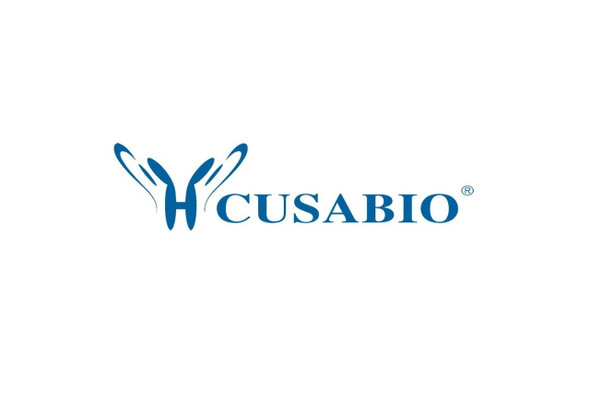Cusabio Human Recombinants
Recombinant Human CD63 antigen (CD63), partial | CSB-YP004950HU1a4
- SKU:
- CSB-YP004950HU1a4
- Availability:
- 25 - 35 Working Days
Description
Recombinant Human CD63 antigen (CD63), partial | CSB-YP004950HU1a4 | Cusabio
Alternative Name(s): Granulophysin Lysosomal-associated membrane protein 3 Short name: LAMP-3 Melanoma-associated antigen ME491 OMA81H Ocular melanoma-associated antigen Tetraspanin-30 Short name: Tspan-30 CD_antigen: CD63 MLA1, TSPAN30
Gene Names: CD63
Research Areas: Cancer
Organism: Homo sapiens (Human)
AA Sequence: AGYVFRDKVMSEFNNNFRQQMENYPKNNHTASILDRMQADFKCCGAANYTDWEKIPSMSKNRVPDSCCINVTVGCGINFNEKAIHKEGCVEKIGGWLRKNV
Source: Yeast
Tag Info: N-terminal 6xHis-sumostar-tagged
Expression Region: 103-203aa
Sequence Info: Partial
MW: 27.5 kDa
Purity: Greater than 85% as determined by SDS-PAGE.
Relevance: Functions as cell surface receptor for TIMP1 and plays a role in the activation of cellular signaling cascades. Plays a role in the activation of ITGB1 and integrin signaling, leading to the activation of AKT, FAK/PTK2 and MAP kinases. Promotes cell survival, reorganization of the actin cytoskeleton, cell adhesion, spreading and migration, via its role in the activation of AKT and FAK/PTK2. Plays a role in VEGFA signaling via its role in regulating the internalization of KDR/VEGFR2. Plays a role in intracellular vesicular transport processes, and is required for normal trafficking of the PMEL luminal domain that is essential for the development and maturation of melanocytes. Plays a role in the adhesion of leukocytes onto endothelial cells via its role in the regulation of SELP trafficking. May play a role in mast cell degranulation in response to Ms4a2/FceRI stimulation, but not in mast cell degranulation in response to other stimuli.
Reference: "CD63 antigen. A novel lysosomal membrane glycoprotein, cloned by a screening procedure for intracellular antigens in eukaryotic cells." Metzelaar M.J., Wigngaard P.L., Peters P.J., Sixma J.J., Nieuwenhuis H.K., Clevers H.C. J. Biol. Chem. 266:3239-3245(1991)
Storage: The shelf life is related to many factors, storage state, buffer ingredients, storage temperature and the stability of the protein itself. Generally, the shelf life of liquid form is 6 months at -20?/-80?. The shelf life of lyophilized form is 12 months at -20?/-80?.
Notes: Repeated freezing and thawing is not recommended. Store working aliquots at 4? for up to one week.
Function: Functions as cell surface receptor for TIMP1 and plays a role in the activation of cellular signaling cascades. Plays a role in the activation of ITGB1 and integrin signaling, leading to the activation of AKT, FAK/PTK2 and MAP kinases. Promotes cell survival, reorganization of the actin cytoskeleton, cell adhesion, spreading and migration, via its role in the activation of AKT and FAK/PTK2. Plays a role in VEGFA signaling via its role in regulating the internalization of KDR/VEGFR2. Plays a role in intracellular vesicular transport processes, and is required for normal trafficking of the PMEL luminal domain that is essential for the development and maturation of melanocytes. Plays a role in the adhesion of leukocytes onto endothelial cells via its role in the regulation of SELP trafficking. May play a role in mast cell degranulation in response to Ms4a2/FceRI stimulation, but not in mast cell degranulation in response to other stimuli.
Involvement in disease:
Subcellular Location: Cell membrane, Multi-pass membrane protein, Lysosome membrane, Multi-pass membrane protein, Late endosome membrane, Multi-pass membrane protein, Endosome, multivesicular body, Melanosome, Secreted, exosome, Cell surface
Protein Families: Tetraspanin (TM4SF) family
Tissue Specificity: Detected in platelets (at protein level). Dysplastic nevi, radial growth phase primary melanomas, hematopoietic cells, tissue macrophages.
Paythway:
Form: Liquid or Lyophilized powder
Buffer: If the delivery form is liquid, the default storage buffer is Tris/PBS-based buffer, 5%-50% glycerol. If the delivery form is lyophilized powder, the buffer before lyophilization is Tris/PBS-based buffer, 6% Trehalose, pH 8.0.
Reconstitution: We recommend that this vial be briefly centrifuged prior to opening to bring the contents to the bottom. Please reconstitute protein in deionized sterile water to a concentration of 0.1-1.0 mg/mL.We recommend to add 5-50% of glycerol (final concentration) and aliquot for long-term storage at -20?/-80?. Our default final concentration of glycerol is 50%. Customers could use it as reference.
Uniprot ID: P08962
HGNC Database Link: HGNC
UniGene Database Link: UniGene
KEGG Database Link: KEGG
STRING Database Link: STRING
OMIM Database Link: OMIM









